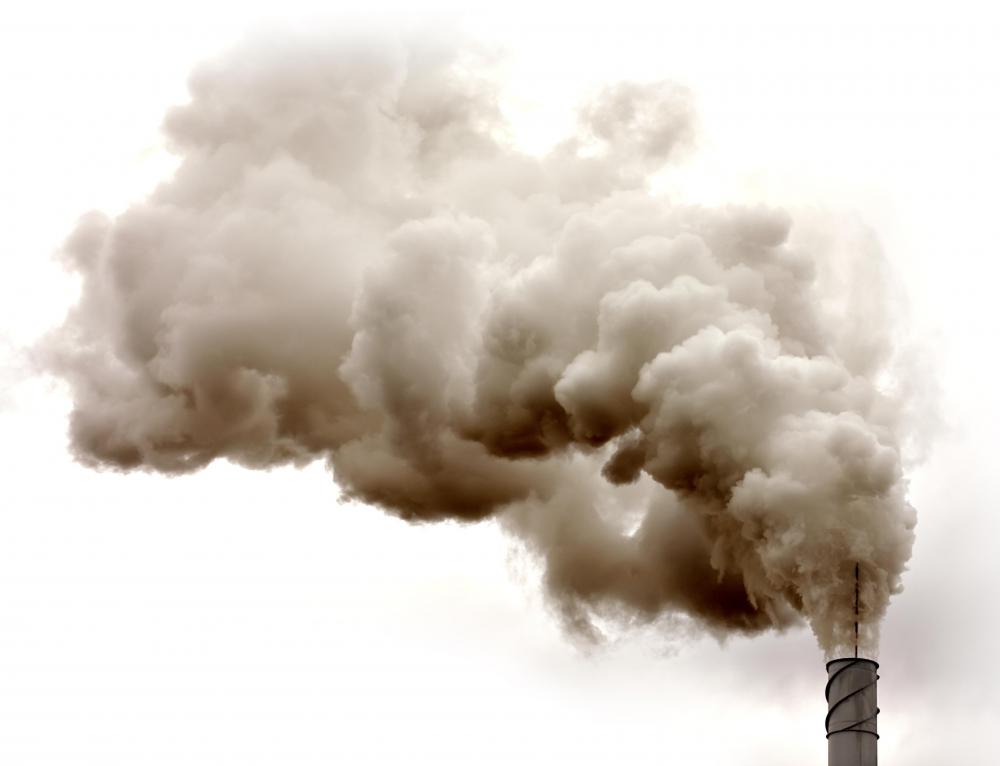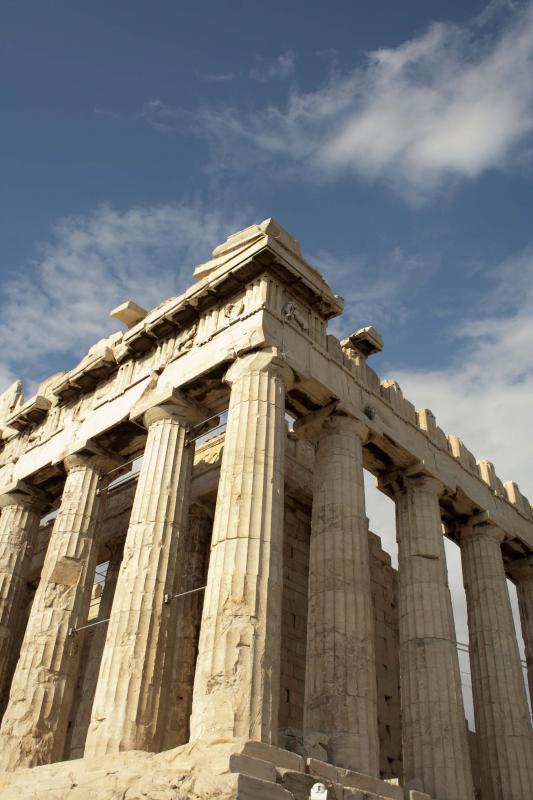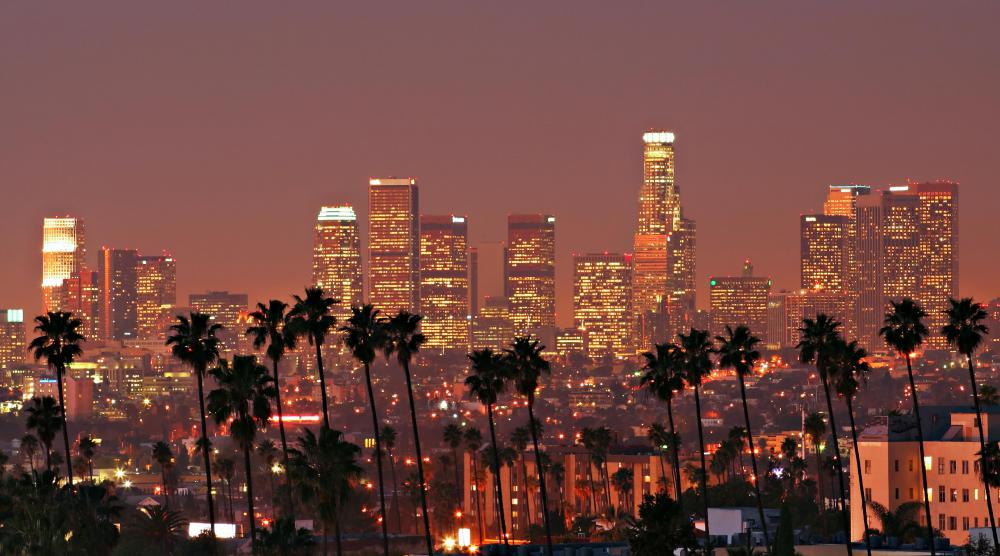At AllThingsNature, we're committed to delivering accurate, trustworthy information. Our expert-authored content is rigorously fact-checked and sourced from credible authorities. Discover how we uphold the highest standards in providing you with reliable knowledge.
What is Smog?
Smog is particulate air pollution, characterized by low visibility and an assortment of human health problems. There are several types, including naturally formed volcanic smog, or vog, and efforts have been made in many parts of the world to reduce the amount of smog. What many people are not aware of is that the most insidious part is often invisible, and specialized scientific instruments are required to get an accurate picture of this pollution.
The term was coined in 1905, when Harold Antoine des Voeux wanted to come up with a word to describe the heavy fog unique to London. He created a portmanteau of “fog” and “smoke” which was quickly picked up by a number of newspapers. The type that des Voeux was describing was industrial smog, caused by the combustion of materials like coal. London had been plagued with this pollution for centuries, with numerous visitors to the city commenting about it through the ages.

Another type is photochemical smog, caused by a chemical reaction between oxygen, hydrocarbons, and other particular matter in the atmosphere. Under the right conditions, these particles oxidize, forming ozone and nitrous oxide. This is the type associated with cities like Los Angeles, caused by sunny days and numerous vehicle emissions.
Certain meteorological conditions are required for smog to form. The right weather is usually accompanied by stagnant winds and an air inversion in which hot air presses down on cooler air below, concentrating the pollution near the ground. Visibility may be obscured, as is the case with industrial types, or it might seem merely hazy, in the case of photochemical. When viewed from a distance, a concentration of photochemical smog takes on a brownish orange color.

Numerous people suffer during smoggy conditions, including children and the elderly. People with respiratory conditions may also begin to feel unwell, since this pollution is very hard on the airways. The mucus membranes of the eyes and nose can also become irritated, leading to soreness and discomfort. In addition, smog is harmful to plants and animals. Persistent pollution can damage crops and cause long term health problems for pets and farm animals. Finally, it can become corrosive, damaging buildings and vehicles. Industrial smog is especially well known for this, and several major historical sites around the world, such as the Parthenon, are at risk from corrosion.
Frequently Asked Questions
What exactly is smog and how is it formed?

Smog is a type of air pollution that combines smoke and fog to create a dense layer of haze in the atmosphere. It forms when pollutants from vehicles, industrial processes, and other sources react with sunlight. Nitrogen oxides and volatile organic compounds are key contributors, and their reaction with sunlight leads to the formation of ground-level ozone, a primary component of smog.
What are the main components of smog?

The main components of smog include ground-level ozone, particulate matter (like dust, soot, and metals), carbon monoxide, sulfur dioxide, and nitrogen oxides. These pollutants originate from various sources such as car exhausts, power plants, factories, and natural occurrences like wildfires and volcanic activity.
How does smog affect human health?
Smog can have significant adverse effects on human health. Exposure to smog can lead to respiratory problems, aggravate asthma, and reduce lung function. It can also cause eye irritation and reduce the body's resistance to colds and lung infections. According to the World Health Organization, millions of premature deaths are attributable to air pollution each year.
Are certain groups more vulnerable to the effects of smog?

Yes, certain groups are more vulnerable to the effects of smog. Children, the elderly, and individuals with pre-existing respiratory or heart conditions are at greater risk. Children are especially susceptible because their lungs are still developing, and they are more active outdoors, which increases their exposure to polluted air.
What can be done to reduce smog levels?

To reduce smog levels, it's essential to limit the emission of pollutants. This can be achieved by using cleaner fuels, improving energy efficiency, and adopting renewable energy sources. Regulations like vehicle emissions standards and industrial pollution controls are also effective. On an individual level, using public transportation, carpooling, and reducing energy consumption can contribute to lower smog levels.
How does weather influence the formation and severity of smog?

Weather plays a significant role in the formation and severity of smog. High temperatures can increase the rate of chemical reactions that form smog, while stagnant air due to high-pressure systems can trap pollutants close to the ground. Conversely, strong winds can disperse pollutants, and rain can help remove them from the atmosphere, temporarily improving air quality.
AS FEATURED ON:
AS FEATURED ON:

















Discussion Comments
smog is a serious problem here in Los Angeles, its difficult to see past a lot of this stuff, smells icky too! --jessaride
This may sound silly and it is the first time I've entered a comment so please bear with me. If you have ever used a smokeless ashtray you know that it takes the smoke and filters it, why can`t this concept be used in the cities in the form of large towers in and around the problem areas it would seem to work, taking in the bad air and recirculating it into clean air a lot like the wind turbines they use now for electricity. I am not a scientist, but who knows?
how so we preserve atmosphere from smog? what are the technical considerations given to handle this alarming threat?
The usually clear and clean Hawaiian air has been a little hazy lately. Come to find out that this is vog, volcanic smog. Actually the recommendation was to stay indoor, especially for people who are sensitive. It is a new concept for me. I have not experienced vog before. Some trade winds would be helpful to clear up the air.
Post your comments